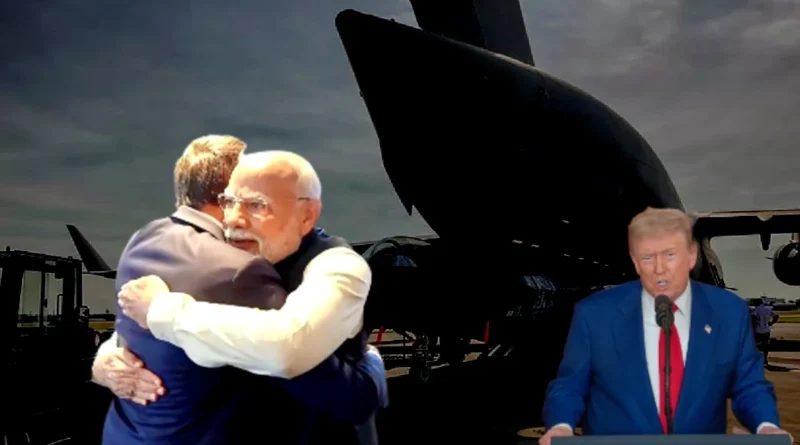F-35s are piling up like a stack of playing cards — India delivers its sharpest attack on America, sending shockwaves across the world
A fighter jet rapidly moves up and down, sometimes increasing its speed and at other times slowing down. Building an engine capable of withstanding such intense pressure is no easy task.
In February, when Prime Minister Narendra Modi visited the United States, Washington tried hard to push the F-35 fighter jet onto India. Fortunately, India follows its own process in defense deals — it takes time, weighs the positives and negatives, and does not rush into any agreement. You might recall the scene when an American F-35 remained parked at Kerala airport for nearly 37 days and was only allowed into a hangar two weeks later. But now, America’s F-35 is facing setbacks one after another, collapsing like a house of cards. Reports have even emerged of the aircraft having to make unscheduled landings in places like Japan.
Taking all this into account, India has made a major decision. Despite U.S. pressure and warnings, Prime Minister Modi has chosen a historic path. Just as he did not bow to American pressure on trade negotiations or on importing Russian oil, he is now standing firm on fighter jet technology. In a significant blow to the U.S., France has announced that it will jointly develop a fifth-generation stealth fighter jet engine with India and transfer the entire technology. Under the Make in India initiative, this technology will be produced domestically, enabling India not only to build its Advanced Medium Combat Aircraft (AMCA) but also to manufacture its own engines for it.
Currently, only four countries — Russia, the U.S., Britain, and France — have managed to build fifth-generation fighter jet engines. China, despite spending billions of dollars over the last 20–25 years, has failed to fully succeed in developing its own and still modifies Russian engines for its fighters. Creating such an engine is considered the “Mount Everest” of defense technology. These engines must function at altitudes of 50,000 feet, burning fuel at 2,000°C in conditions where the outside temperature can be –50°C. On top of this, a jet engine must withstand extreme pressure as the aircraft accelerates, decelerates, and maneuvers rapidly — an immense engineering challenge.
France handing over this cutting-edge technology to India is therefore a historic development. On August 15, Prime Minister Modi had hinted that India would soon begin work on an indigenous fifth-generation stealth fighter jet engine. He called upon Indian innovators and youth to take on the challenge of developing jet engines domestically, just as India built vaccines during COVID and pioneered UPI digital payments. Six days later, on August 22, the announcement came: India and France would collaborate on building fifth-generation fighter jet engines.
For the U.S., this is a major setback. Washington has often used fighter jet engines as leverage against India. The American-made engines that power India’s Tejas fighter jets have been deliberately delayed in delivery for the past two years, with the U.S. pressuring India to buy its F-35s in return. But with this new Franco-Indian collaboration, such blackmail will no longer work. India is set to build its own fifth-generation stealth fighters and engines, marking a turning point in its defense and technological self-reliance.
Stay updated with International News in Hindi on Prabhasakshi

